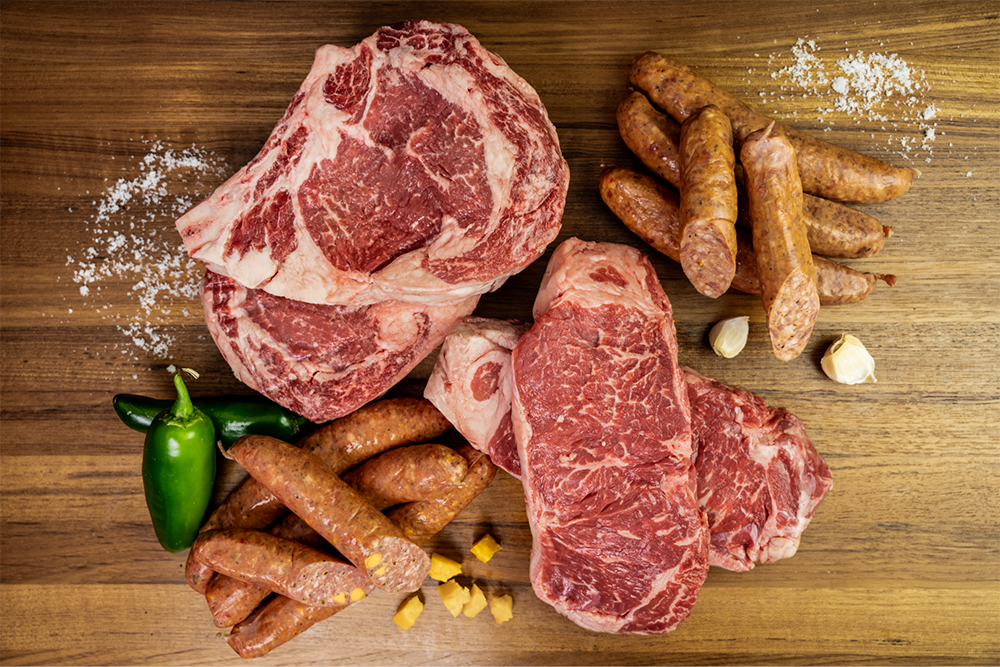Discover the Art of the Butcher's Cut in a Modern Meat Market
In the ever-evolving landscape of modern-day meat markets, the butcher's cut has transcended its traditional roots, combining olden craftsmanship with contemporary techniques. What genuinely sets the contemporary butcher apart is their ability to build a much deeper connection in between consumers and the origins of their meat.
Advancement of Butchery Methods
The evolution of butchery methods mirrors a rich tapestry of innovation and adjustment driven by improvements in modern technology, modifications in customer demand, and a much deeper understanding of meat scientific research. Historically, butchery was a craft passed down with generations, with methods developed over centuries to optimize yield and flavor. Nonetheless, the industrial transformation ushered in automation, changing traditional practices and enabling large processing.
The mid-20th century saw butchery methods better refined by scientific insights right into muscular tissue biology and meat aging, enhancing both tenderness and preference. Innovations like vacuum packaging and refrigeration prolonged item shelf-life, permitting butchers to expand offerings and improve high quality control. This duration additionally noted the surge of customized equipment, such as band saws and meat slicers, which increased precision and effectiveness in meat processing.

Digital systems currently aid in tracking animal provenance and maximizing cuts to fulfill particular customer choices. Furthermore, a revival in artisanal butchery has actually emerged, blending typical abilities with contemporary knowledge to provide to consumers looking for honest and lasting meat alternatives.
Understanding Meat Cuts
Recognizing the ins and outs of meat cuts is important for both butchers and customers looking for quality and worth. For butchers, specific cuts reflect ability and regard for the craft, guaranteeing marginal waste and optimal yield.

Recognizing muscle mass make-up is essential; muscular tissues made use of a lot more frequently by the pet often tend to be tougher and are best matched for sluggish food preparation approaches, while less-used muscle mass, like those found in the loin, are extra tender and suitable for grilling or roasting. Knowledge with these distinctions encourages customers to make educated choices, improving their culinary undertakings.
Selecting Top Quality Meat
Choosing the ideal meat involves even more than simply picking a visually attractive piece from the display. The art of choosing top quality meat requires a discerning eye and understanding of details qualities that indicate freshness and excellence.
Secondly, think about the marbling, which refers to the white streaks of fat within the muscular tissue. Proper marbling is an essential sign of inflammation and taste, as it thaws throughout food preparation, enhancing the meat's juiciness. Keep in mind, greater marbling usually correlates with premium quality cuts, such as USDA Prime.
Texture is one more vital variable; meat should feel firm to the touch, not slimy or overly soft. Additionally, bear in mind the scent. Fresh meat ought to have a clean, neutral smell, complimentary from any kind of sour or repulsive smells.
Combining Cuts With Cooking Techniques

On the other hand, harder cuts like brisket and chuck roast are rich in collagen, which breaks down right find out here into jelly when cooked slowly. These cuts are excellent for braising or slow roasting, enabling the meat to soften with time and develop deep, complex flavors. In a similar way, cuts such as brief ribs and pork shoulder fare well with slow-cooking techniques, where prolonged cooking times change their durable appearances into succulent dishes.
Lamb shanks and oxtail, which call for long term cooking to tenderize, are ideal prospects for cooking or slow simmering. These approaches coax out rich, passionate tastes while preserving moisture. By understanding the unique features of each cut, chefs and home cooks alike can elevate their cooking productions, guaranteeing each dish is both satisfying and memorable.
The Butcher's Role Today
Browsing the advancing landscape of the contemporary meat market, the butcher's function today prolongs past simple preparation of cuts. Contemporary butchers are cooking artisans, teachers, and advocates for sustainable methods. They link the space in between the farm and the fork by making sure moral sourcing, recognizing animal husbandry, and focusing on openness in the supply chain. This change reflects the growing customer demand for top quality over amount, where provenance and animal well-being are paramount.
In enhancement to crafting exact cuts, butchers currently engage directly with clients, offering cooking guidance and tailoring options to suit private demands and choices. Their expertise in meat aging, marbling, and flavor accounts equips consumers to make educated choices, boosting their cooking experiences. This tailored solution exemplifies the butcher's progressing function as a relied on consultant in the kitchen area.
In addition, butchers are critical in lessening waste, using entire pets to produce diverse items such this hyperlink as sausages and stocks. This detailed strategy not only values the pet however also straightens with contemporary sustainability goals. In this method, the contemporary butcher personifies both tradition and development, adapting to an ever-changing market look at this web-site while preserving the artistry and honesty of their craft.
Final Thought
The modern butcher's craft delicately weaves traditional methods with modern-day advancements, emphasizing lasting techniques and ethical sourcing. Proficiency in recognizing varied meat cuts and top quality indicators empowers butchers to give enlightened referrals, aligning details cuts with optimal food preparation techniques. This knowledge not only boosts culinary experiences but also reinforces the link between consumers and the origins of their food. By recognizing historical practices while welcoming modern demands, the butcher's duty remains vital in today's advanced meat market (bagley farms meat market edwardsville il).